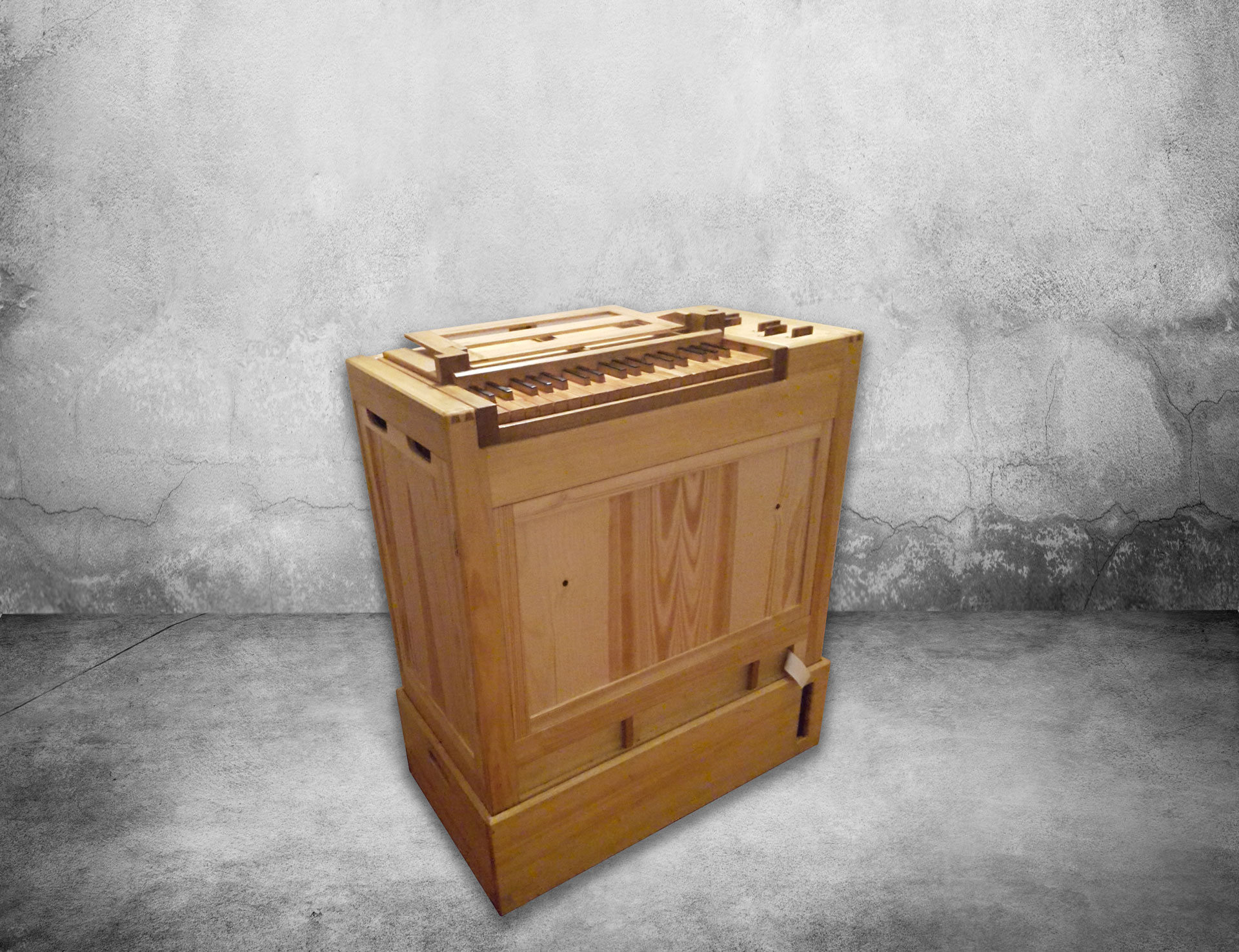This organ positive was manufactured in our workshop in 2017. It’s designed especially for players loving simplicity and pure style. In accordance with customer's request, it was realized in an uncomplicated modern style, which, however, is complemented by intonation into the Italian style. This organ was built as an accompanying instrument for choir singing and its advantages is especially an easy decomposition and easy preparation for numerous transports. Moreover, the transport can be realized with only one person.

The instrument compass is 3 octaves from c to c3 and is projected to accomodate 7 registers, 5 of them are occupied by:
Currently in accordance with customer’s request the last two registers have remained unoccupied:
The dimensions of the main case are incredible 87 cm long, 70 cm high and 40 cm wide. The postament dimensions are 90 cm x 22 cm x 42 cm.
There were achieved significant space savings thanks to a partial solution of organ sound in the unit style. Within that the two registers with equal sound and color share some octaves. For example, the Copula 8 ' has 2 shared octaves with Copula 4', Principal 2 ' with Mixtura 1', and so on. It was possible to minimize the instrument size with maintaining the dispositions with this unique solution.
Inside the case there are also an electric blower and balancing bellow to release the effort of the player. Despite its unusually small size, the instrument can provide a breathtaking and rich sound with no recognizable signs about the organ pipes savings.
This instrument was built from several types of wood. The main cabinet is from spruce, the flute pipes originated from a combination of spruce, linden and oak wood. And the holders of the registers tracture are manufactured of cherry wood. Each of the holders is additionally completed with a brass plate. Other metals used to build this instrument are tin and lead. They are a part of the Principal organ pipes in a ratio of 70 to 30 (or 60 to 40 in the case of Quinta 3 ‘). These organ pipes are intoned “in natura”, without puncture on the core, to a fully open basis hole. All organ pipes are only in the main cabinet. The organ keyboard is also interesting. The whole tones are covered with apricot root wood. They are complemented by semitones of beech wood covered with ebony.
Do not hesitate to contact us